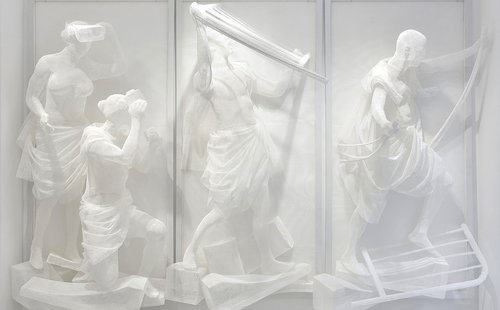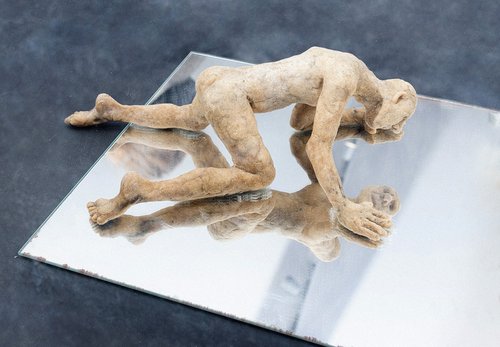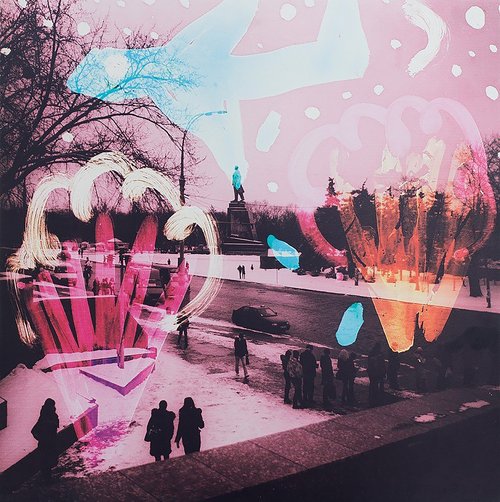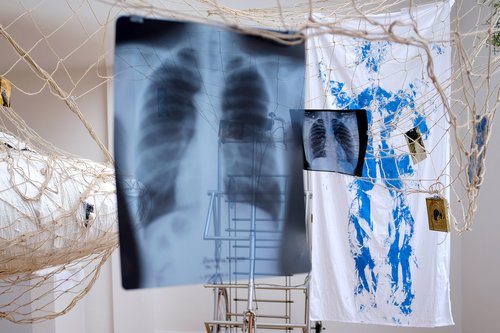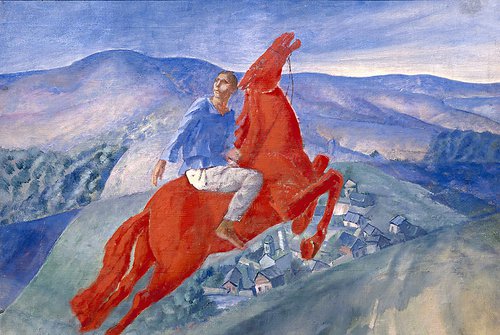Charity Auction of Émigré Russian Art in Paris
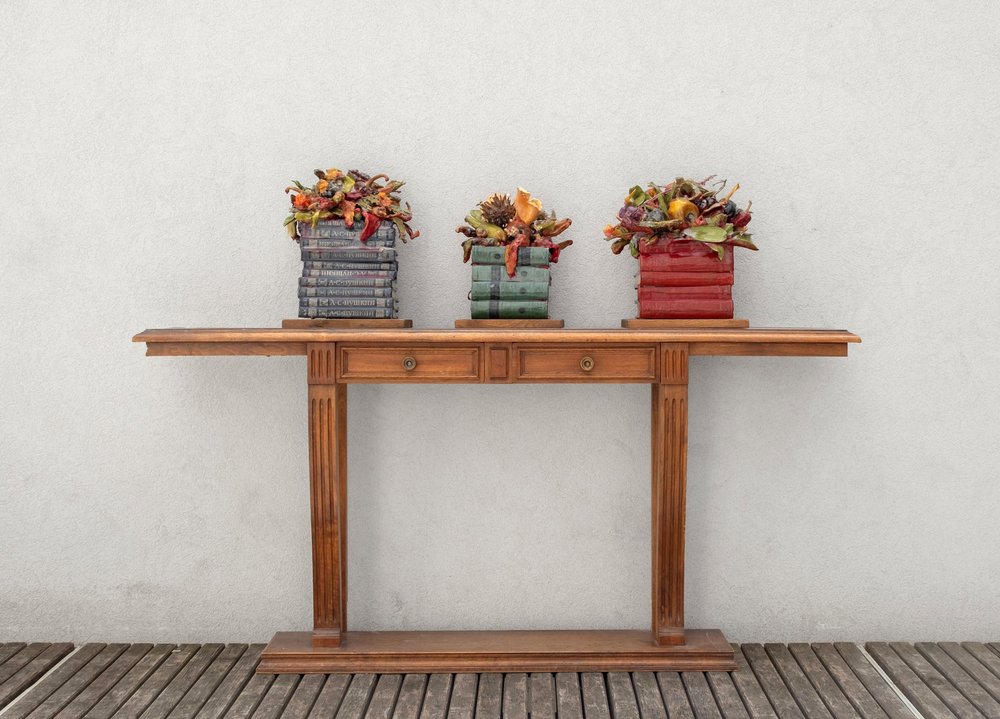
Fedora Akimova. Books from a Kiev apartment, 2023. Exhibition view. Paris, 2024. Courtesy of Sans Drapeau exhibition-auction
An exhibition of anti-war Russian artists called ‘Sans Drapeau’ is taking place in a Parisian gallery ‘La Supérette du Quotidien’ after which all the works will be auctioned to raise funds for humanitarian aid for Ukrainian refugees.
In this cosy two-story gallery curator Vika Privalova has assembled works by two dozen Russian artists, all reflecting on major political decisions made against their will and without their participation. Each work looks for answers to questions that arose after Russian army entered Ukraine on 24th of February 2022 such as how to continue to create art during the war, how to create art under censorship and whether even art in exile is possible.
An ironical diptych ‘You can’t!’ and ‘Untitled’ 2022 made by a well-known street art artist, whose style is immediately recognisable, is a reflection on the theme of self-censorship. ‘Name Hidden’ continues to work in Russia, his graffiti is usually rich in textual content with a recognisable colour palette and black lettering. On one canvas, the letters are hidden by black-coloured fragments, on the other, phrases are cut out referring to anti-war posters where activists covered letters in the word ‘war’ in a response to censorship.
In Object 3 from the 2023 series ‘Books from a Kiev Apartment’ by Fedora Akimova (b. 1987) books by Russian classical writers are folded into columns as a symbol of imperial architecture, the capitals made from real dried fruits painted to look as if they were made of ceramic and stylized as still lifes. "I painted them like something already dead, like Egyptian mummies, like Lenin in a mausoleum" says the artist.
Artist Andrey Kuzkin (b.1979) discusses the importance of text in Russian art: "Russian culture is quite closed and logocentric. Some of the conceptualist practices that I use in my art, they don't work in France, because here art is much more plastic and based on a subtle visual experience, while Russian art tells stories".
Kuzkin's work ‘Cubes (Interchangeability)’ which he made last year is a block created from soil he dug up from a Parisian cemetery and figures made of bread. The sculpture reflects the battle of Bakhmut, it was reported in the news that dividing the town into squares measuring 48 cm by 48 cm would result in one casualty per square. Kuzkin was forced to emigrate to France. “I am grateful to France for taking me in and saving me from prison and other probems,” says the artist.
Art-group Yav which was founded in 2015 are showing ‘Migratory’ (2023), a constantly moving flock of migrating birds in search of a better place appears in the clouds above the ruins of the city. A half-opened suitcase is abandoned on the steps of the gallery, next to the suitcase is a book of poems by Daniil Kharms, a Russian absurdist writer who was repressed in the twentieth century.
Artists uprooted from their homeland are being forced to find new ways of income. As Andrey Kuzkin admits “Naturally, people cannot suddenly be commercially successful here, and artists have a rather difficult life. People who in Russia have had some success, including commercial success, here they have not had it, so they cannot earn money through their art. If they cannot earn money, then, they cannot live. So they are forced to do other work in order to survive. I understand that for an artist in France there are two paths. Sometimes these paths cross. One is when an artist spends part of his time writing letters, applications, getting grants either from the state or from large institutions. The artist lives off that. He or she is travelling between these residences and works on his or her own projects. Without knowing the language, it is difficult. The second model is the commercial model, when an artist starts to develop through a gallery. And exhibits work in the gallery, and the gallery sells it. Both paths are quite difficult in the state of immigration, especially since many artists need a studio, they need a place to produce their own work, they need to rent the studio, pay for it, and so on. But nobody promised it would be easy.”
Urals artist Alisa Gorshenina (b.1994) has not left Russia and continues to explore the mythology of her region. Her textile figure ‘Uprooted 2022’ is placed on the glass in front of a balcony with a tree with hanging roots. But the figure of the tree-girl is detached from the roots. Nevertheless, it can be dangerous for contemporary artists addressing the current situation to stay in Russia. Small watercolour sketches by artist Saсha Skochilenko (b.1990), were drawn at a detention centre in 2022-2023, where she was imprisoned for anti-war action. The works are placed under the ceiling and visitors are invited to look at them through binoculars, emphasising the physical distance between artist and audience.











